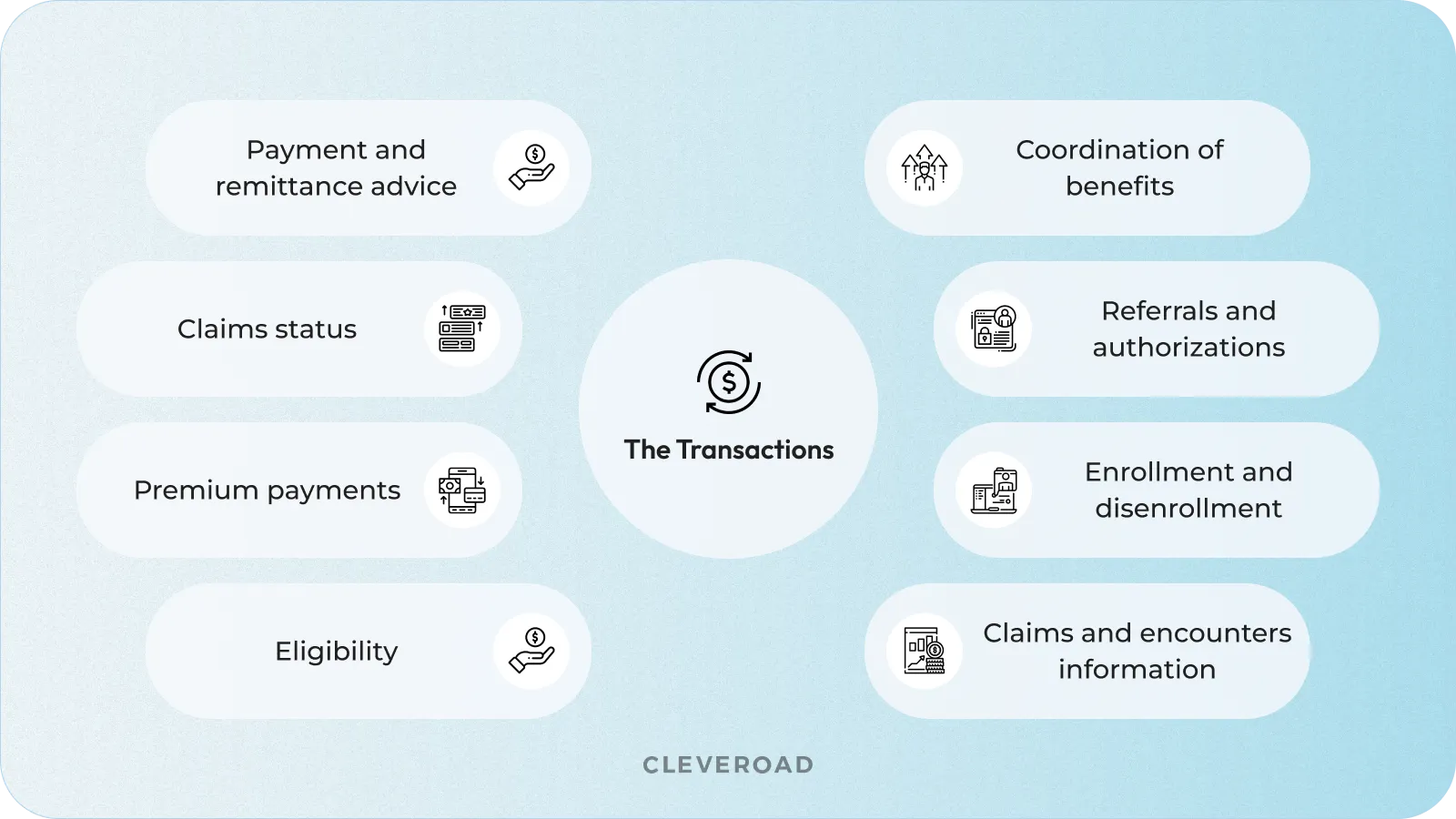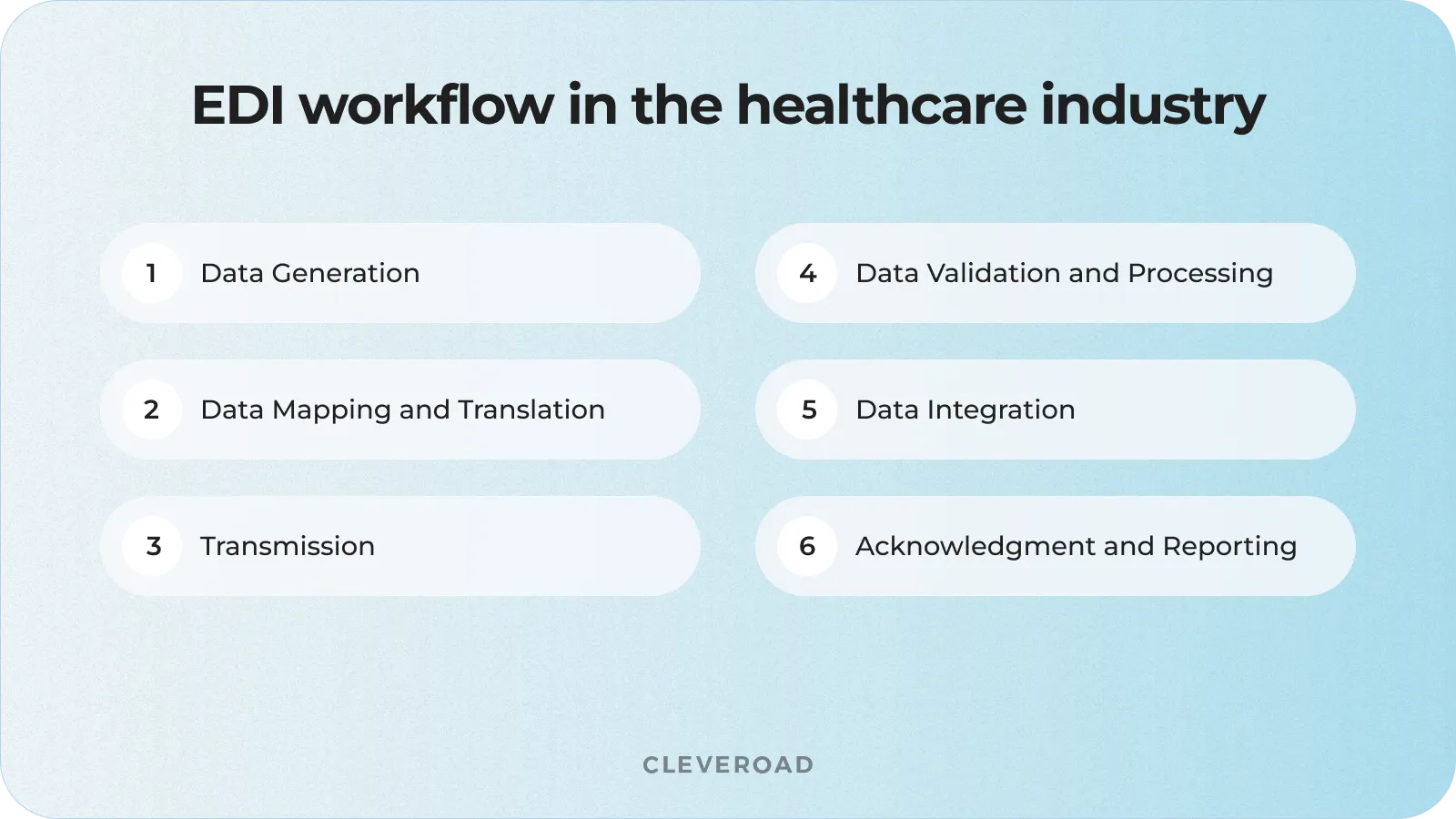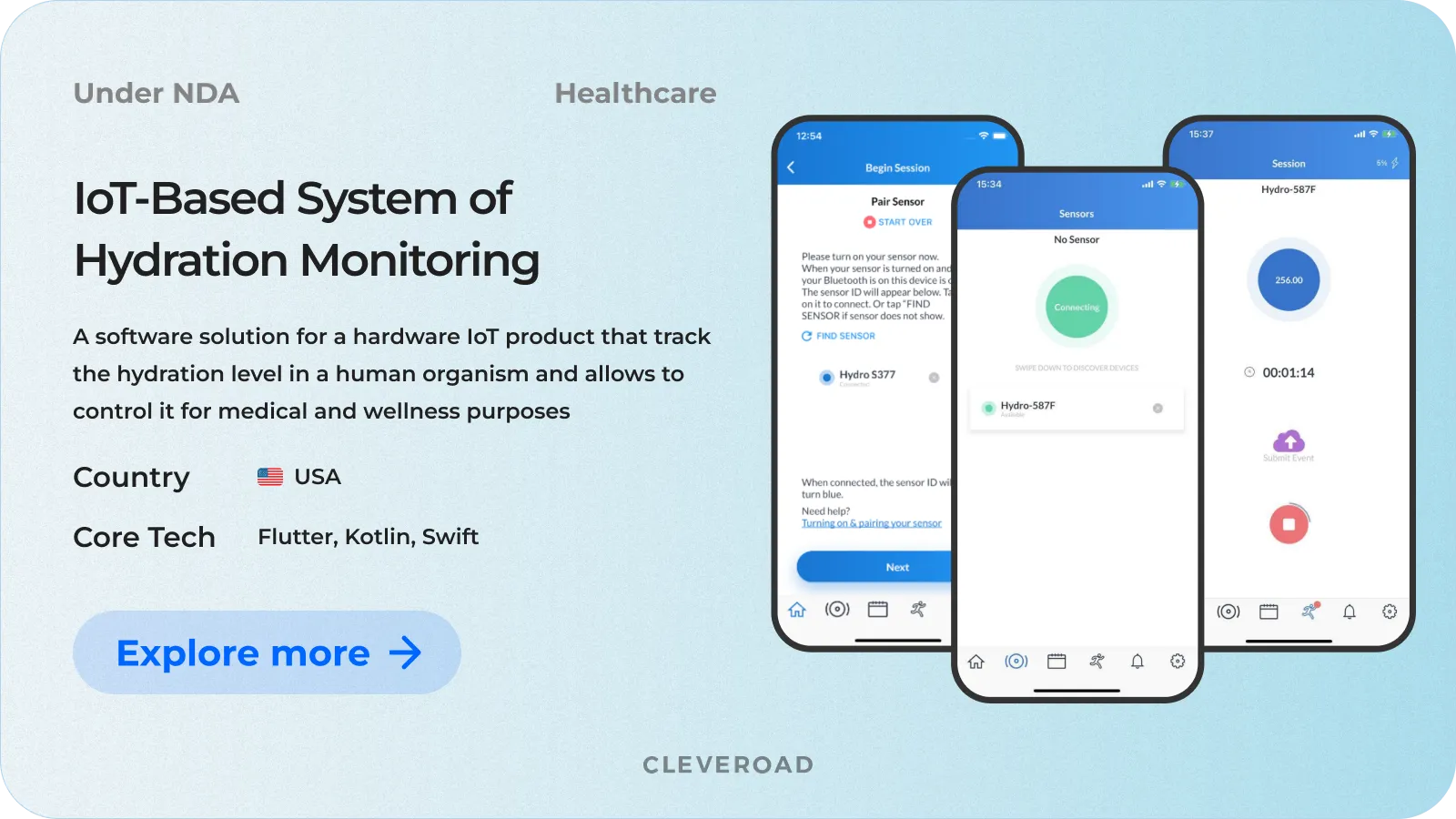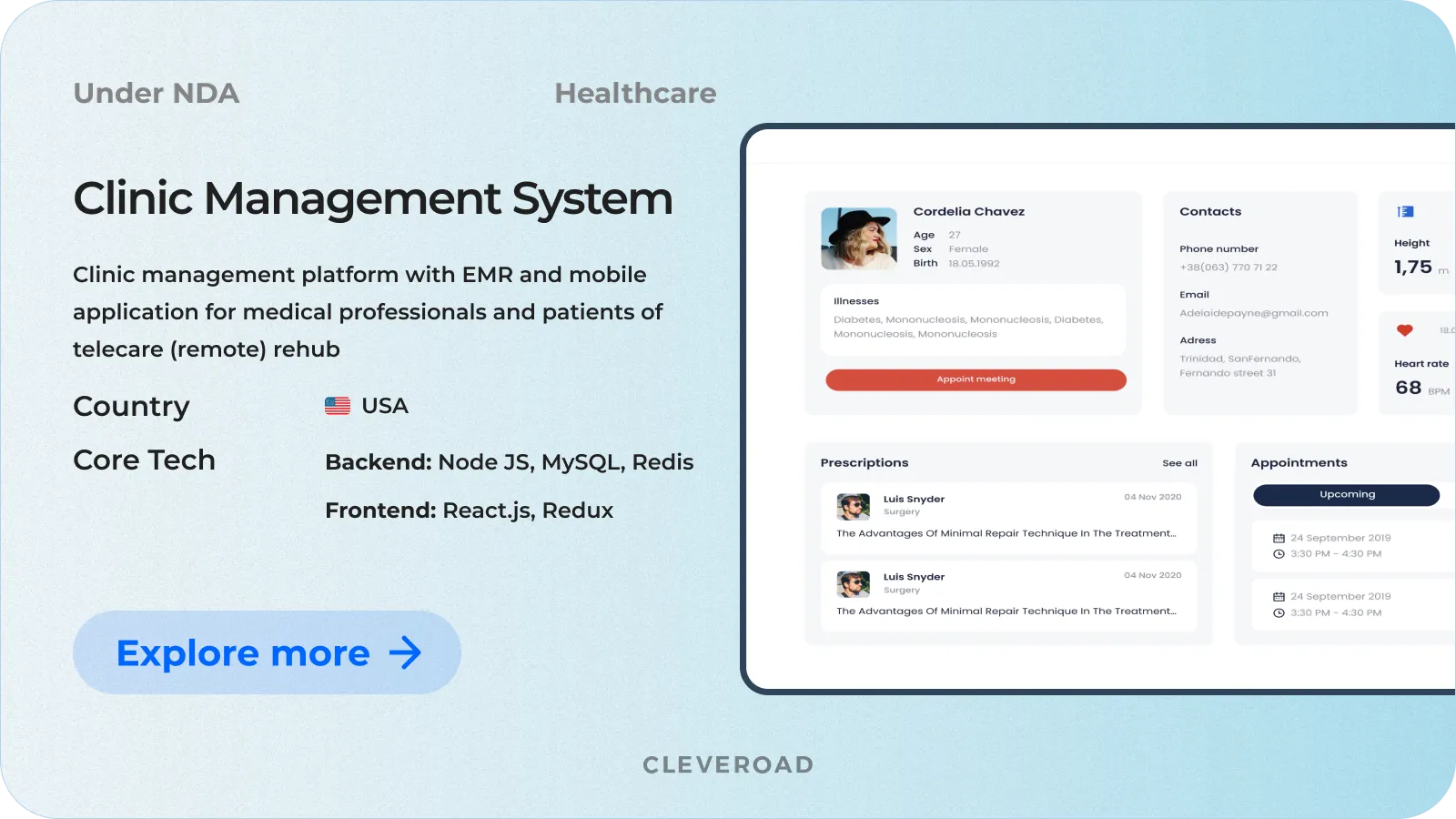EDI in Healthcare: What Is It and Why Does It Matter?
Updated 22 Aug 2023
12 Min
711 Views
Matter? Within the medical business, digitalization, the transmission, and exchange of information between healthcare organizations and providers, is becoming increasingly important to ensure high-quality healthcare. In this context, Electronic Data Interchange (EDI) takes an indispensable part. EDI is an information transfer system that automates the processing and exchange of data between various healthcare institutions and providers.
In case you are striving to streamline the medical business data transmission by implementing and adopting EDI healthcare or already have such software and want to extract maximum benefits from it, in this article, you can discover:
- The adoption and practical EDI utilization within healthcare establishments
- The value of medical data electronic transmission
- Seamless integration of EDI into healthcare digital product
What Is the Essence of EDI Transactions in Healthcare?
EDI has been utilized in the healthcare sector for many years, primarily by payers for tasks like coverage determination and benefits verification. Still, for those who are not acquainted, EDI, which stands for Electronic Data Interchange, is just one of several crucial integration disciplines, including EAI (Enterprise Application Integration), MFT (Managed File Transfer), and APIs (Application Programming Interfaces), that collectively contribute to a significant return on investment and drive digital transformation.
EDI transactions in healthcare essence lie in the efficient and secure exchange of data among healthcare organizations and providers. EDI enables the electronic transmission of various healthcare documents, such as medical claims, invoices, patient records, and prescriptions, using standardized formats and protocols.

The concept of EDI healthcare
The primary goal of EDI in healthcare is to streamline administrative processes, improve accuracy, and enhance the overall quality of patient care. By replacing manual and paper-based methods with electronic data interchange, healthcare entities can minimize errors, reduce paperwork, and expedite the flow of information.
Healthcare EDI transactions offer several key benefits in the healthcare industry
- Such software eliminates the need for manual data entry, reducing the risk of human errors that can have serious consequences for patient safety
- EDI promotes faster and more efficient data exchange, enabling healthcare providers to access vital information in a timely manner
- The timely access to patient data facilitates quicker diagnosis, treatment decisions, and care coordination
- Healthcare EDI transactions enhance billing and reimbursement processes by automating the submission of claims, accelerating payment cycles, and reducing billing discrepancies
- Enhanced financial management for healthcare organizations as well as minimized delays in processing claims, ensuring that patients receive appropriate care without unnecessary setbacks
EDI transactions also support compliance with industry standards and regulations, such as HIPAA (Health Insurance Portability and Accountability Act) in the United States, which safeguards patient privacy and data security. By adhering to standardized EDI formats, healthcare entities can maintain data integrity and confidentiality during transmission.
Read more about HIPAA compliant software development in our checklist
Consequently, the concept of EDI transactions in healthcare comprises in their ability to facilitate accurate, efficient, and secure data exchange among healthcare stakeholders. Adopting the EDI, healthcare organizations can enhance their operational processes, improve patient care outcomes, and ultimately contribute to a more effective and patient-centered healthcare system.
How Does EDI Work in Healthcare?
EDI in healthcare operates by facilitating the secure and efficient exchange of electronic data between different entities within the healthcare ecosystem. Here's how EDI typically operates in healthcare:
- Standardized formats. EDI relies on standardized formats, such as ANSI X12 or HL7, which define the structure, syntax, and content of the data being transmitted. These formats ensure that data is consistently structured and can be easily understood by both the sender and the receiver.
- Data translation. Before transmission, data is translated into the appropriate healthcare EDI format. This translation process involves converting data from internal systems, such as electronic health records (EHRs) or practice management systems, into a standardized format compatible with EDI.
- Data transmission. Once the data is in the EDI format, it is transmitted electronically between the sender and the receiver using secure communication protocols, such as FTP (File Transfer Protocol) or AS2 (Applicability Statement 2). These protocols ensure data integrity and confidentiality during transit.
- Data validation. Upon receiving the EDI data, the recipient performs validation checks to ensure the data's accuracy and compliance with predefined rules and standards. This validation includes verifying data elements, such as patient identifiers, procedure codes, or insurance information, against relevant databases or reference systems.
- Data processing. After successful validation, the EDI healthcare data is processed by the recipient's systems. This may involve updating patient records, generating claims, processing payments, or performing other administrative and clinical functions, depending on the specific purpose of the EDI transaction.
- Acknowledgment and response. Once the recipient has processed the EDI data, an acknowledgment or response is sent back to the sender. This acknowledgment confirms the receipt of the data and may include additional information, such as claim acceptance, payment details, or error notifications.

EDI healthcare workflow
EDI in healthcare operates by employing standardized procedures to exchange electronic data between healthcare entities. It relies on specific transaction sets that define the structure and content of the transmitted information.
Key types of EDI transactions in healthcare
Several key types of EDI transactions are commonly utilized in the healthcare industry, let’s overview the integral ones.
The Healthcare Claims (837) This transaction enables healthcare providers to submit detailed information about services rendered, such as diagnoses, procedures, and charges, to payers for efficient claim processing and payment.
Health Care Claim Payment/Advice (820) It provides payment details and electronic remittance advice (ERA) to healthcare providers, assisting them in reconciling and processing payments more effectively.
Enrollment and Disenrollment (834) Handling electronic enrollment and disenrollment of individuals in health plans, this transaction is also responsible for ensuring accurate and timely processing by including demographic data, coverage start and end dates, and benefit plan details.
Eligibility Verification (270/271) Talking about the 270/271 transaction, it allows healthcare providers to verify a patient's insurance coverage, sending an inquiry (270) and receiving a response (271) containing information about coverage status, benefits, and limitations.
Claims Status Inquiry and Response (276/277) transaction Such a transaction facilitates the exchange of information between providers and payers regarding the status of a claim. Providers can submit an inquiry (276), and payers respond (277) with details about claim acceptance, rejection, or processing status.
By carefully evaluating your organization's requirements, considering industry standards, consulting with trading partners, and factoring in regulatory compliance, you can make an informed decision when choosing the most suitable healthcare EDI transactions type for your healthcare organization.
Key Benefits of Integrating EDI in Healthcare
Integrating EDI (Electronic Data Interchange) in healthcare offers several key benefits, addressing various challenges faced by the industry. Let’s discover which are the most valuable benefits you can obtain from adopting and leveraging EDI and which obstacles it can eliminate:
Manual errors and inefficiencies
Paper-based and manual processes in healthcare can lead to errors, delays, and increased administrative overhead. EDI in healthcare eliminates manual data entry and ensures the accurate and efficient exchange of information, reducing errors and streamlining workflows. Data inconsistencies and discrepancies. Inconsistent data formats and varying data standards across different healthcare entities can hinder effective communication and data exchange. EDI utilizes standardized formats and protocols, promoting data consistency and interoperability, which improves data accuracy and enables seamless integration between systems.
Time-consuming administrative tasks
Traditional administrative tasks, such as claims processing, eligibility verification, and payment reconciliation, often require significant time and resources. Healthcare EDI automates these tasks, enabling faster processing, reducing administrative burden, and freeing up resources for more valuable activities, such as patient care.
Lack of real-time information
Timely access to accurate patient information is crucial for providing quality care. EDI transactions in healthcare facilitate real-time or near-real-time data exchange, allowing healthcare providers to access critical information promptly, make informed decisions, and deliver timely and coordinated care.
Security and privacy concerns
Patient data security and privacy are paramount in healthcare. EDI incorporates secure communication protocols and adherence to regulatory standards, such as HIPAA (Health Insurance Portability and Accountability Act), ensuring the confidentiality and integrity of sensitive information during transmission.
Inefficient claims processing and reimbursement
Manual claims processing and reimbursement workflows can be complex and prone to errors, resulting in delays and payment discrepancies. EDI for healthcare automates the claims submission, adjudication, and payment processes, accelerating reimbursement cycles, reducing billing errors, and improving revenue management for both healthcare providers and payers.
By addressing these challenges, integrating EDI in healthcare significantly enhances operational efficiency, reduces costs, improves data accuracy, promotes collaboration between stakeholders, and significantly enhances patient care and satisfaction. It streamlines administrative processes, optimizes resource utilization, and contributes to more efficient and customer-oriented medical software.
How to Implement EDI in Healthcare
Creation and adoption of EDI may seem challenging at first glance, but having a structured range of steps, you are guaranteed to achieve success. To implement EDI in your healthcare business, you should follow these steps:
Determine your organization's needs
Identify the specific requirements and goals for implementing EDI for healthcare. Assess whether your internal systems are ready for integration and define the problems you aim to solve or the improvements you seek to achieve with EDI. Remember that you can always order IT consultation from a specialized provider to get help in evaluating the feasibility and potential benefits of EDI for your organization.
Find an experienced tech partner
Seek out a reliable and competent technology partner with expertise in healthcare EDI implementation. Collaborate with them to develop a comprehensive plan and strategy for integrating EDI into your existing systems. You can start by researching reputable software development companies on platforms like Clutch that have verified rates and reviews for software development vendors globally. Pay attention to the vendors’ experience in EDI implementation, knowledge of industry standards and regulations, and their ability to understand your specific requirements. Additionally, consider their expertise in data security and compliance to ensure the protection and privacy of sensitive healthcare information.
Discover the opportunities of Cleveroad healthcare software development services
EDI software development and integration
Work with your tech partner to develop or select suitable healthcare EDI software that aligns with your organization's needs. Integrate the EDI solution with your existing systems, such as electronic health record (EHR) systems, practice management systems, or billing systems. Ensure seamless data exchange and interoperability between different systems.
Testing and validation of EDI transactions
Perform thorough testing and validation of your EDI transactions to ensure they conform to the required standards and are compatible with the systems of your trading partners. Verify the accuracy and integrity of data during transmission and reception.
Staff training
Provide training to your staff members who will be involved in using the EDI system. Educate them about the medical EDI processes, transaction sets, and any specific workflows or guidelines related to EDI implementation in your organization. Ensure they are proficient in using the EDI software and understand the benefits it brings to their daily tasks.
Ongoing EDI support
Maintain ongoing support and collaboration with your tech partner to address any issues, updates, or enhancements related to the EDI system. Stay updated with changes in EDI standards or regulations to ensure compliance and optimal performance. Regularly evaluate the effectiveness of the healthcare EDI implementation and make necessary adjustments to maximize its benefits.
The primary thing to do is begin partnering with the right tech experts, so you can successfully implement EDI in healthcare, streamline data exchange processes, boost your productivity, and enhance communication across your existing healthcare ecosystem.
Cleveroad Experience in Healthcare and Telemedicine Systems Development
Cleveroad is a software development company with over 11 years of experience in various industries, including Healthcare and Telemedicine. Our rich expertise in implementing powerful digital products will allow you to get high-quality and standards-compliant solutions covering compliant healthcare software.
Our team specializes in developing EDI healthcare software that enables our customers to efficiently exchange electronic data with partners and third parties in accordance with industry requirements and standards. Our key aim is to create reliable and secure solutions that meet our customer's needs and help them streamline their healthcare business processes.
Let us demonstrate our experience in practice:
IoT-based system for EKG monitoring
Our US-based customer is a medical IoT hardware manufacturer specializing in ECG heart monitoring devices and pulse oximeters. They sought to enhance their digital services and establish an online presence while ensuring compliance with national health regulations, including FDA and HIPAA requirements.
To achieve this, they required the expertise of an experienced technology provider who could assist them with the following:
- Developing software applications that enable users to access and monitor ECG and blood oxygen levels using their smartphones.
- Creating an e-commerce solution for selling their medical devices online.
- Ensuring adherence to regulatory standards, such as FDA and HIPAA, to guarantee the privacy and security of patient data.
We designed and developed user-friendly mobile applications that integrate seamlessly with their IoT devices for EKG monitoring. Our experts also implemented robust security measures to protect sensitive patient information and ensured compliance with applicable regulations.
As a result, our client received a mobile telehealth app that meets US health regulators' requirements and provides users with opportunities to track vital signs. More than 95% of users' reviews rate the solution with "4-5 stars". The app also receives positive feedback from doctors.
Clinic management system
Our client is a rehabilitation clinic based in the US that specializes in providing remote care and online consultations. They were using an EMR system developed by a 3rd-party vendor and delivered as a SaaS solution. However, they found that nearly 40% of the included features were unnecessary for their specific needs.
Due to these reasons, they needed a software development partner to fulfill the services listed below:
- Creating a custom platform without dependency on third parties and only necessary functionality
- Deploying the platform on AWS hosting while meeting HIPAA requirements within the secure data migration
- Building a solution for creating and scheduling appointments, aligning it with billing, managing users and workflow into the absolute hub
As an output of our cooperation, our customer was delivered with a comprehensive solution that encompasses essential functionalities, like appointment booking, real-time scheduling, human resources management, accounting, payments, and prescriptions. The solution is thoughtfully designed to meet the HIPAA requirements, and specific needs of the clinic, ensuring efficient management and a seamless experience for healthcare professionals and patients.
Get seamless EDI integration
Book a call with our Healthcare subject matter expert on EDI integration to optimize your data flow
EDI healthcare refers to the implementation and utilization of Electronic Data Interchange (EDI) technology within the healthcare industry. It encompasses the electronic exchange of healthcare-related data, such as patient information, claims, payments, eligibility details, and other administrative transactions. EDI in healthcare enables organizations to automate processes, reduce manual errors, improve efficiency, and enhance collaboration among different stakeholders in the healthcare ecosystem.
Types of EDI files in healthcare refer to electronic files that contain structured data following specific standards, such as ANSI X12 or HL7, for the exchange of healthcare information. These files enable the secure and standardized transfer of data between different healthcare organizations, including providers, payers, and regulatory agencies.
EDI transaction sets healthcare are standardized electronic exchanges of specific types of healthcare data between trading partners. These transactions include processes such as healthcare claims (837), healthcare claim payment/advice (820), enrollment and disenrollment (834), eligibility verification (270/271), and claims status inquiry and response (276/277). Each transaction serves a specific purpose and follows predefined formats to ensure accurate and efficient data exchange.
EDI stands for Electronic Data Interchange in healthcare. It refers to the electronic exchange of structured data, following standardized formats and protocols, between various healthcare organizations. EDI enables the seamless and secure exchange of information, such as patient data, claims, payments, and eligibility, among different entities within the healthcare industry.

Evgeniy Altynpara is a CTO and member of the Forbes Councils’ community of tech professionals. He is an expert in software development and technological entrepreneurship and has 10+years of experience in digital transformation consulting in Healthcare, FinTech, Supply Chain and Logistics
Give us your impressions about this article
Give us your impressions about this article

